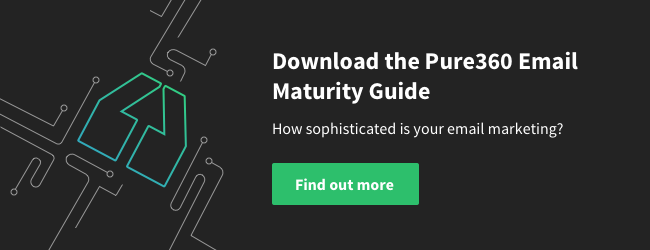Christmas is not just about short-term sales. It’s about creating a great experience for your customers so they return.
Think about John Lewis – one of the best-known retailers, famed for their Christmas marketing. It’s not just the big budget TV ads – it’s their approach to the customer that sets them apart. They connect with their customers emotionally, inspire them, offer quality, reassurance and great service.
In the final installment of our three-part guide to Christmas email marketing success we look at how you can better connect with your customers to offer this experience.
Don’t hard-sell all the time
It can be tempting to focus all your energy on emails that drive sales. But unless you’re Amazon, your customers probably won’t make lots of multiple purchases in the weeks leading-up to Christmas. Your customers are far more likely to purchase with you once or twice. This means that continually sending sales emails can be pointless after they’ve just made a purchase and makes what you’re saying irrelevant.
To keep people engaged, break-up sales messages with requests for post-purchase reviews, incentivise people to refer their friends, offer rewards for loyalty and give them interesting content. Customers will appreciate the change of pace and the emails will be relevant to where they are in the customer journey (editor’s note: link ‘customer journey’ to blog about designing customer journeys). By encouraging customers to share their experience with you socially you may even find you generate new customers.
Offer Christmas shoppers reassurance
Some people still don’t trust online retailers when it comes to shopping online. A few years ago when the snow fell in the run-up to Christmas even the biggest of retailers – Amazon – failed to deliver on time. Since then a lot has changed – delivery times have improved and retailers aren’t willing to risk their reputation for a few more days of trading when their goods might not arrive on time.
Tackle these fears head on. Send out a specific customer service campaign to people who’ve browsed but not purchased on your site. Reassure them about your delivery options and times, the security of your website, payment options and no quibble refund policy. Give them peace of mind that shopping with you online is a safe and trusted option.
Get them to return in the New Year
If they’ve purchased with you over the Christmas then encourage them to come back later in the New Year. Reward them with an offer for a purchase in January, incentivise them to come in-store or send them samples of new products available at a later date. All too often retailers see shoppers once a year in December – the holy grail is getting them to shop outside this period.
Getting them to return is all about providing a good experience first time around. And providing great customer service is showing that you care. Be sure to ask them what they thought about their last purchase and the service you gave to them. Make it easy for them to provide feedback – send them customer service questionnaires via email, phone numbers and links to your social media channels. And send informative delivery dispatch emails or SMS where they can track their orders with minimal effort.
People might be shopping for gifts at Christmas but the chances are they may have browsed a few items for themselves whilst they were shopping. Look at what people browsed but didn’t purchase during the festive period. If it isn’t explicitly a gift then send them an email to tempt them back to purchase for themselves.
Using these tactics you’ll be able to create a good experience for your festive shoppers – one that results in referrals and customers returning outside the festive period.
Don’t hesitate to contact the team if you need help over the festive period – we’ve got plenty of advice. Alternatively, check out Part One and Part Two of our guide!
Happy Christmas!

